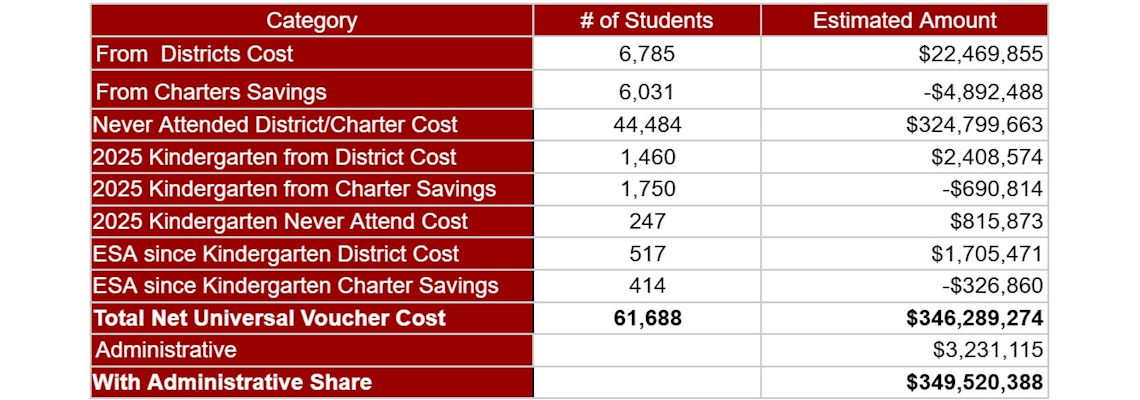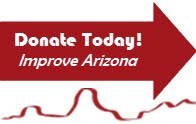Laura Meckler of the Washington Post visited Arizona to learn about the effects of an expansive program of charter schools and vouchers. Arizona voted overwhelmingly against vouchers in a state referendum in 2018. Vouchers lost by 65-35%. The rightwing legislature and Governor Douglas Ducey, encouraged by billionaire Charles Koch, ignored the views of the electorate and enacted a large voucher program.
Now the state underwrites the tuition of kids who were already in private schools, many of whom come from affluent families. Voucher schools admit the students they want and exclude those they don’t want.
Arizona’s charter sector includes for-profit charters and charters run by entrepreneurs and grifters. It has experienced numerous scandals.
There’s no accountability for voucher schools and minimal accountability for homeschoolers whose parents spend money on sports equipment, ninja warrior training, toys, LEGO sets, and a wide variety of nonacademic stuff.
Eli Hager of ProPublica wrote that the cost of vouchers had blown a huge hole in the state’s budget, making it necessary to reduce spending on highway projects, water infrastructure, and other critical needs.
Vouchers and charters have not produced academic gains. On the National Assessment of Educational Progress (NAEP), Arizona is among the lowest-ranking states.
But the biggest consequence of voucher expansion has been the closing of neighborhood public schools. .
Meckler writes:
PHOENIX — The party at John R. Davis Elementary School was in full swing, but at the snow cone station, the school’s librarian was in tears.
In the cafeteria, alumni marveled at old photographs on display and shook their heads. On a wall of the library, visitors posted sticky notes to describe their feelings: “Angry,” read a purple square. “Anxious,” said a pink one. “Annoyed.” “Heart broken.” “Bummed.” And more than any other word: “Sad.”
Ten days later, John R. Davis Elementary School would close — not just for the summer, but for good.
Now, as the new school year begins, the Roosevelt Elementary School District opens with just 13 schools. That’s almost a third fewer than it had last spring, a response to enrollment declines as the state offers unprecedented taxpayer funding for alternatives to public school.
The party gave the community a few hours to celebrate the school’s 43 years — to say goodbye.
“It’s a grieving process for me,” Antionette Nuanez, the librarian, told a pair of Davis graduates who dropped by the party. Everyone at the party, it seemed, was feeling the loss — loss of tradition, of community, of simply having a school in walking distance. Nuanez, in particular, was overcome with the emotion of it all: “It’s like a death,” she said.
Perhaps more than any other state, Arizona has embraced market competition as a central tenet of its K-12 education system, offering parents an extraordinary opportunity to choose and shape their children’s education using tax dollars, and developing a national reputation as the Wild West of schooling.
The state has supported a robust charter school system, tax money for home schooling and expansive private school vouchers, which are available to all families regardless of income. Nearly 89,000 students receive Empowerment Scholarship Accounts, a form of vouchers, state data show; a second voucher program awarded nearly 62,000 tax-supported private school scholarships in 2024, though some students received more than one. More than 232,000 students attend charter schools.
Together, these programs help explain why just 75 percent of Arizona children attended public schools in 2021, the most recent year for which data is available. That’s one of the lowest rates in the country.
Supporters of school choice say families are turning to alternatives because public schools are not serving their children well. It’s only right, they argue, that tax dollars follow children to whatever educational setting their families choose.
Critics complain that vouchers eat up state funding, benefit families who can afford private school on their own, disrupt communities and send tax dollars to schools that face little accountability. Unlike public schools, private schools don’t have to administer state tests. They can pick and choose their students, while public schools must educate everyone.
The modern school choice movement began in 1990 with a small voucher program in Milwaukee and has grown into a central plank of the Republican education agenda, with programs now operating in more than half the states. In 2022, Arizona created the first universal program — open to all, not just low-income families. Since then, about a dozen conservative states have adopted universal or near-universal programs. And in July, President Donald Trump signed into law the first federal voucher program, which will require states to opt in, at an estimated cost of $26 billion over the next decade.
Some state programs have now grown so large that spillover effects on public schools are coming into view. In Ohio, the legislature agreed toincrease voucher spending to $1.3 billion by 2027, up from just over $1 billion in 2025, while traditional public schools, which serve far more children, were given a smaller increase — and less than what public education advocates say had been promised under a multiyear agreement to ramp up school spending. In Florida, which has a $4 billion voucher program, public schools districts are seeing enrollment declines, meaning less money from the state and, in many cases, budget cuts.
The ramifications for public education have been particularly clear in Arizona, offering an early picture of K-12 education under the Republican vision of maximum school choice, or what proponents call education freedom. Here, public schools are starting to close.
The challenge: more competition for the same number of students. For the past 15 years, the state’s school-age population has remained steady, though the overall population has grown, said Rick Brammer, principal manager of Applied Economics, a consulting firm that has analyzed enrollment trends, demographic data and the effects of school choice programs in dozens of Arizona school districts.
“You’re taking the same size pie and cutting it into more pieces,” Brammer said. “As we’ve created and funded alternatives, we’ve just emptied out school after school from the districts. In a tight nutshell, that’s the whole story.”



